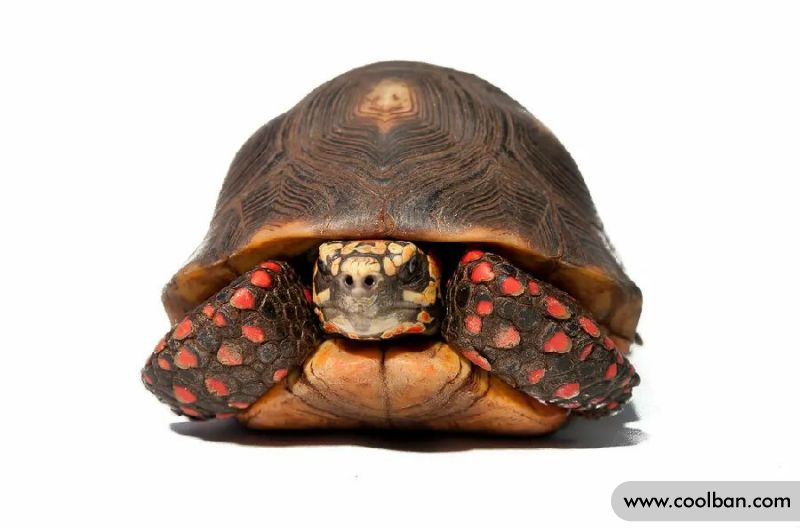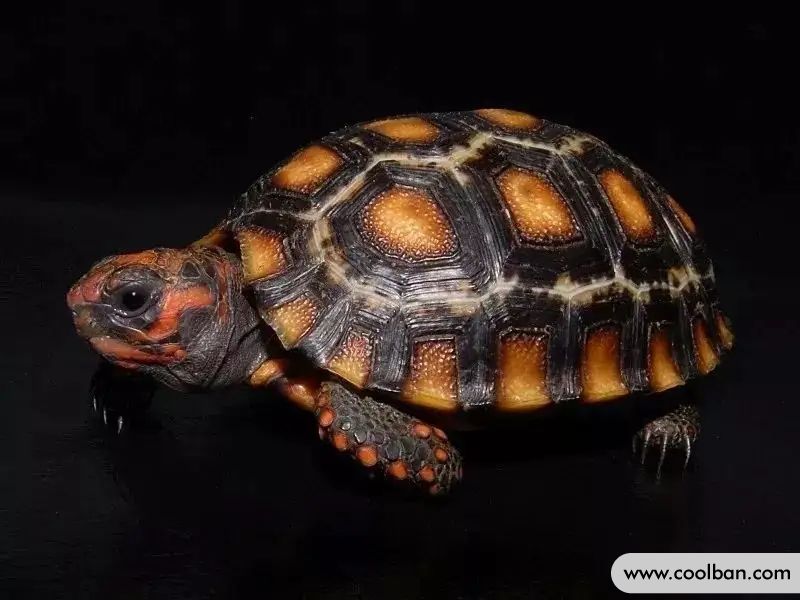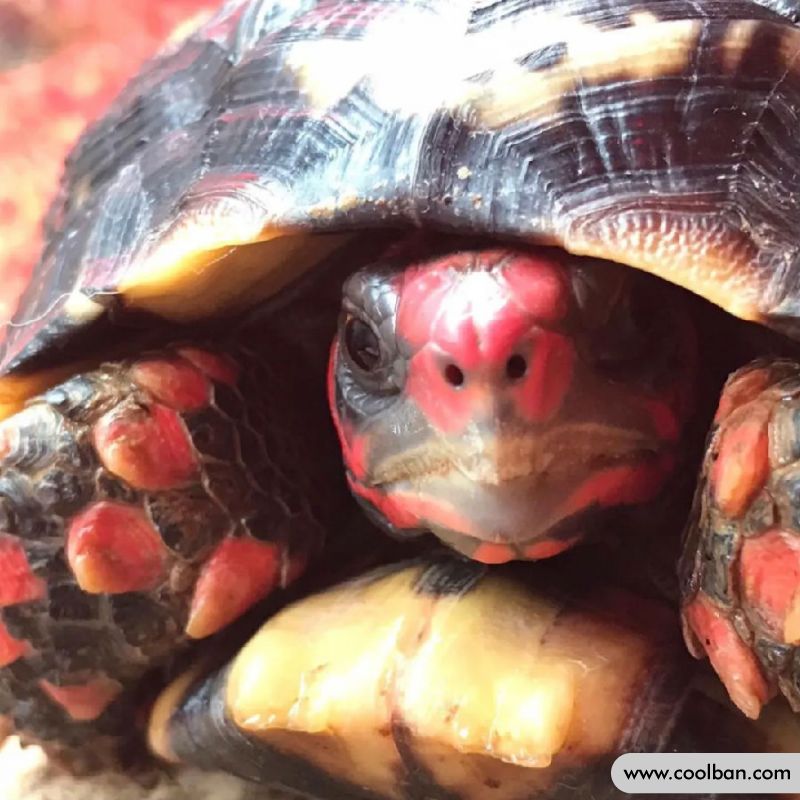Feeding environment of red-footed tortoises
2022-05-23
Red-footed tortoises are a favorite among turtle lovers. The price of red-footed tortoises is relatively reasonable and affordable, and red-footed tortoises have low environmental requirements, are not easy to get sick, and are easy to raise, so many people love to raise red-footed tortoises.
The red-footed tortoise is a member of the genus Tortoise. Inhabits terrestrial habitats, forests, tree cavities, and fever caves. Red-footed tortoises are also found on several Caribbean islands, but the species is thought to be found in Introduced in the 17th century as a convenient food source.

Appearance characteristics of red-footed turtles
The red-footed tortoise is a species of red-footed tortoise. If you have the opportunity to meet a real red-footed turtle, you will find that the biggest characteristic of the red-footed turtle is that the scales on his legs are red, not all legs are red.
1. Appearance characteristics of red-footed turtles
The red legs have a large yellow head and orange or red limbs and tail. The shell is slightly dark brown, and the central part of the shield is slightly yellow. The front legs have sharp scales that are dark red.
They do not grow very large, generally growing to 40-50 cm. Southern varieties are swollen and bulbous around the nostrils. Adult males are on average 50 cm longer than females. The male has a sunken plastron, like the other turtle, and a lower, flatter, more pronounced hourglass-shaped carapace.
2. Changes in adult red-footed tortoises
The red-footed turtle is a medium-sized species. Male red-footed tortoises have greater carapace length and weight than females, but not wider or taller. Like other tortoise species, male red-footed tortoises have a recessed plastron. As red-footed tortoises mature, both males and females develop a distinctive midbody contraction that gives the red-footed tortoise its distinctive hourglass shape when viewed from above. Male tortoises are more pronounced. Adult female turtles have longer and wider tails. Red-footed tortoises undergo a period of body color change during regeneration and development.

Feeding knowledge of red-footed tortoises
1. About the bathing of barefoot turtles
Red-footed tortoises under 10 cm can be soaked every 2 days. If the environment is humid and humid for 3 to 4 days, there is no problem. If they are larger, you can prepare a water basin and let them soak themselves in water. When the turtle is soaking in water, it is drinking water to promote excretion. It is possible to infer whether a turtle is healthy based on acid and feces. If the stool is strip-shaped with a certain green or dark green color, it is generally healthy, and the stool is not formed, indicating that the food intake is too much water.
2. Feeding of red-footed turtles
Although red-footed tortoises can be noted for their seasonal activity, they may lay eggs at any time of the year, so it is always recommended that females be provided with a shelter full of moist sphagnum moss and sand. Nest room. The nesting chamber can be made of a large box with an open top, with a slope so that the turtles can crawl in and out at will. The size of the nesting room should be 1.2x1.2x0.6 meters and filled with damp nesting material, at least 50 thick centimeter. Importantly, there must be more than one male tortoise in a rearing group, and fighting between males is important to induce reproduction in red-footed tortoises.

Breeding environment for red-footed turtles
The red-footed tortoise has special requirements for the environment, because it is a tortoise with relatively high humidity requirements but low temperature requirements. Generally speaking, the humidity of the environment in which the red-footed turtle lives is difficult to control.
1. Humidity settings for red-footed turtles
Red-footed tortoises are the most moisture tolerant tortoise species. Humidity resistance is not the more humid the better, the humidity of the red-footed tortoise should be kept at 50%~60%. Too much humidity can cause the turtles to lose their appetite and even die. Because red-footed tortoises are forest tortoises, they need high humidity. When feeding, you need to put a pot in which the whole turtle can be soaked. If you see it drinking water for a long time, don't be afraid, because every red-footed tortoise is like this, always seems to be thirsty.
2. Temperature requirements for red-footed tortoises
Red-footed tortoises and Indian star tortoises have lower temperature requirements, 26-28°C during the day and 23-25°C at night. For tortoises, a certain temperature difference is a must. This can better promote the turtle's metabolism.
3. The importance of light to red-footed tortoises
Speaking of temperature, we need to talk about sunlight. Adequate sunbathing is very important for turtles. Long-wave UVA and short-wave UVB in natural sunlight are essential for biological growth. They can promote the synthesis of vitamin D3 in the body, and vitamin D3 can promote the absorption of calcium and make the turtle shell grow better. Compared to domestic turtles, wild turtles have a more delicate texture, which is related to diet and sunlight.

Tips for raising red-footed turtles
In the rearing of red-footed tortoises, the most important thing to pay attention to is to control the food intake. Not that the more you eat, the better. The gastrointestinal tract of turtles is very fragile, and eating too much can easily lead to disease.
1. Food options for red-footed turtles
The red-footed tortoise is a member of the genus Tortoise. Inhabits terrestrial habitats, forests, tree cavities, and fever caves. Red-footed tortoises are also found on several Caribbean islands, but the species is thought to be found in Introduced in the 17th century as a convenient food source.

Appearance characteristics of red-footed turtles
The red-footed tortoise is a species of red-footed tortoise. If you have the opportunity to meet a real red-footed turtle, you will find that the biggest characteristic of the red-footed turtle is that the scales on his legs are red, not all legs are red.
1. Appearance characteristics of red-footed turtles
The red legs have a large yellow head and orange or red limbs and tail. The shell is slightly dark brown, and the central part of the shield is slightly yellow. The front legs have sharp scales that are dark red.
They do not grow very large, generally growing to 40-50 cm. Southern varieties are swollen and bulbous around the nostrils. Adult males are on average 50 cm longer than females. The male has a sunken plastron, like the other turtle, and a lower, flatter, more pronounced hourglass-shaped carapace.
2. Changes in adult red-footed tortoises
The red-footed turtle is a medium-sized species. Male red-footed tortoises have greater carapace length and weight than females, but not wider or taller. Like other tortoise species, male red-footed tortoises have a recessed plastron. As red-footed tortoises mature, both males and females develop a distinctive midbody contraction that gives the red-footed tortoise its distinctive hourglass shape when viewed from above. Male tortoises are more pronounced. Adult female turtles have longer and wider tails. Red-footed tortoises undergo a period of body color change during regeneration and development.

Feeding knowledge of red-footed tortoises
1. About the bathing of barefoot turtles
Red-footed tortoises under 10 cm can be soaked every 2 days. If the environment is humid and humid for 3 to 4 days, there is no problem. If they are larger, you can prepare a water basin and let them soak themselves in water. When the turtle is soaking in water, it is drinking water to promote excretion. It is possible to infer whether a turtle is healthy based on acid and feces. If the stool is strip-shaped with a certain green or dark green color, it is generally healthy, and the stool is not formed, indicating that the food intake is too much water.
2. Feeding of red-footed turtles
Although red-footed tortoises can be noted for their seasonal activity, they may lay eggs at any time of the year, so it is always recommended that females be provided with a shelter full of moist sphagnum moss and sand. Nest room. The nesting chamber can be made of a large box with an open top, with a slope so that the turtles can crawl in and out at will. The size of the nesting room should be 1.2x1.2x0.6 meters and filled with damp nesting material, at least 50 thick centimeter. Importantly, there must be more than one male tortoise in a rearing group, and fighting between males is important to induce reproduction in red-footed tortoises.

Breeding environment for red-footed turtles
The red-footed tortoise has special requirements for the environment, because it is a tortoise with relatively high humidity requirements but low temperature requirements. Generally speaking, the humidity of the environment in which the red-footed turtle lives is difficult to control.
1. Humidity settings for red-footed turtles
Red-footed tortoises are the most moisture tolerant tortoise species. Humidity resistance is not the more humid the better, the humidity of the red-footed tortoise should be kept at 50%~60%. Too much humidity can cause the turtles to lose their appetite and even die. Because red-footed tortoises are forest tortoises, they need high humidity. When feeding, you need to put a pot in which the whole turtle can be soaked. If you see it drinking water for a long time, don't be afraid, because every red-footed tortoise is like this, always seems to be thirsty.
2. Temperature requirements for red-footed tortoises
Red-footed tortoises and Indian star tortoises have lower temperature requirements, 26-28°C during the day and 23-25°C at night. For tortoises, a certain temperature difference is a must. This can better promote the turtle's metabolism.
3. The importance of light to red-footed tortoises
Speaking of temperature, we need to talk about sunlight. Adequate sunbathing is very important for turtles. Long-wave UVA and short-wave UVB in natural sunlight are essential for biological growth. They can promote the synthesis of vitamin D3 in the body, and vitamin D3 can promote the absorption of calcium and make the turtle shell grow better. Compared to domestic turtles, wild turtles have a more delicate texture, which is related to diet and sunlight.

Tips for raising red-footed turtles
In the rearing of red-footed tortoises, the most important thing to pay attention to is to control the food intake. Not that the more you eat, the better. The gastrointestinal tract of turtles is very fragile, and eating too much can easily lead to disease.
1. Food options for red-footed turtles
